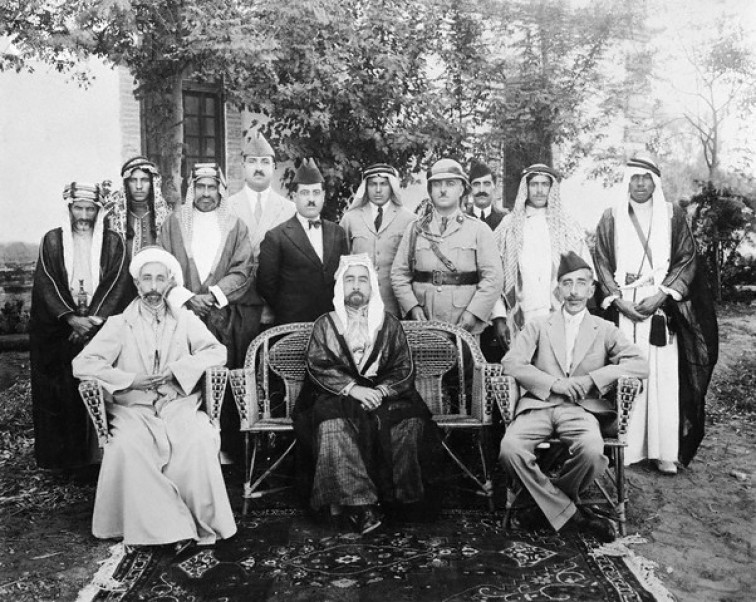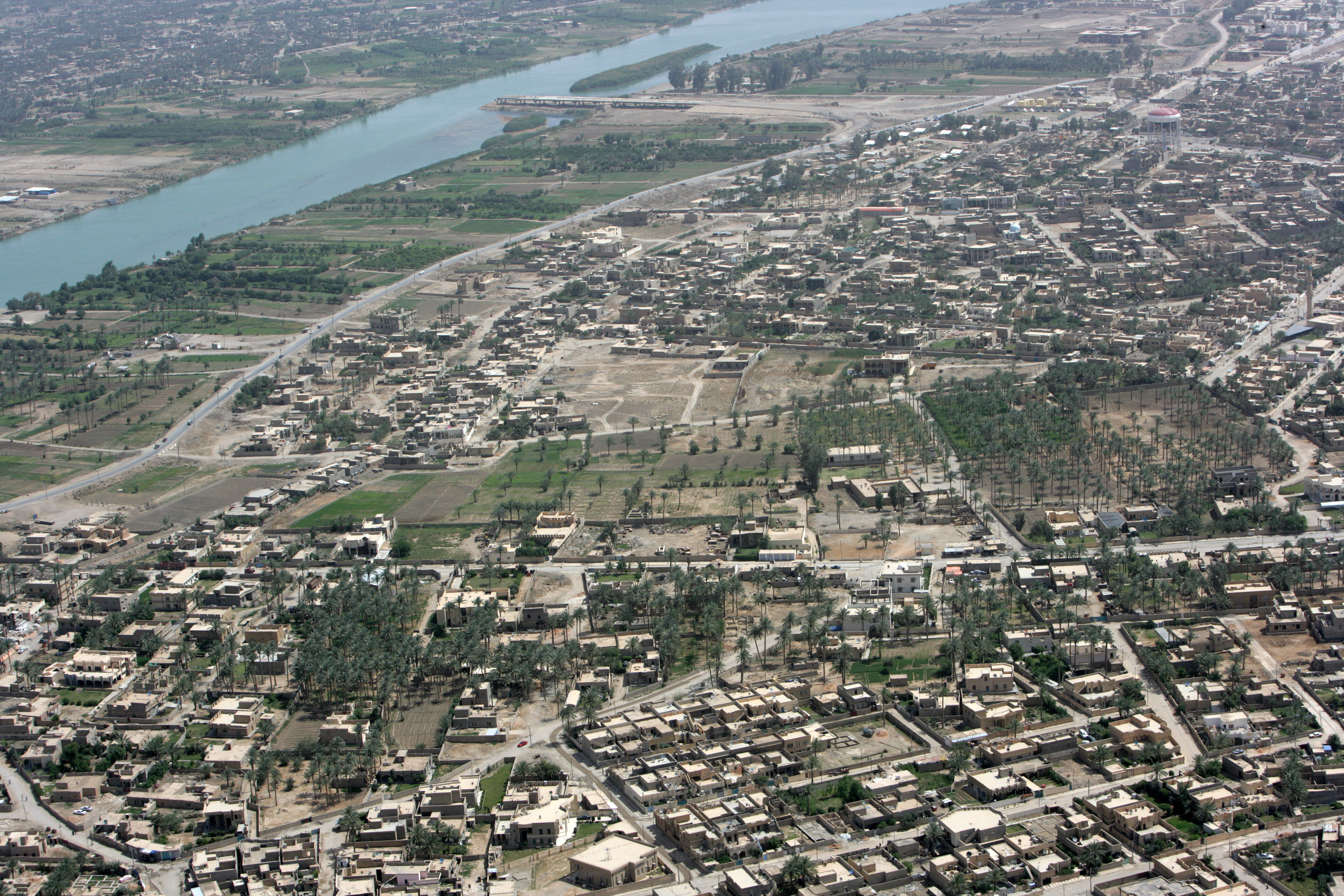|
Abu Al-'Abbas Al-Saffah
Abū al-ʿAbbās ʿAbd Allāh ibn Muḥammad al-Saffāḥ ( ar, أبو العباس عبد الله بن محمد السفّاح; 721/722 – 8 June 754, al-Anbar) usually known as Abūʾl-ʿAbbās as-Saffāḥ or simply by his laqab As-Saffāḥ was the first caliph of the Abbasid Caliphate, one of the longest and most important caliphates (Islamic dynasties) in Islamic history. (Due to different methods of romanising Arabic names, the spellings As-Saffah and Al-Saffah may both be found.) Abū'l ‘Abbās' laqab or caliphal title was ''As-Saffāḥ'' (), meaning "the Blood-Shedder" for his ruthless tactics and perhaps also to instill fear in his enemies. Family origins and earlier history As-Saffāḥ, born in Humeima (modern-day Jordan), was head of one branch of the Banu Hāshim from Arabia, a subclan of the Quraysh tribe who traced its lineage to Hāshim, a great-grandfather of Muhammad via 'Abbās, an uncle of Muhammad, hence the title "Abbasid" for his descendant ... [...More Info...] [...Related Items...] OR: [Wikipedia] [Google] [Baidu] |
Kunya (Arabic)
A ''kunya'' ( ar, كُنية) is a teknonym in Arabic names, the name of an adult usually derived from their oldest child. A kunya is a component of an Arabic name, a type of epithet, in theory referring to the bearer's first-born son or daughter. By extension, it may also have hypothetical or metaphorical references, e.g. in a ''nom de guerre'' or a nickname, without literally referring to a son or a daughter. Use of a kunya implies a familiar but respectful setting. A kunya is expressed by the use of ''Abu (Arabic term), abū'' (father) or ''Umm (given name), umm'' (mother) in a idafah, genitive construction, i.e. "father of" or "mother of" as an honorific in place of or alongside given names in the Arab world and the Islamic world more generally. General use ''Abu (Arabic term), Abū'' or ''Umm (given name), Umm'' precedes the son's or daughter's name, in a Iḍāfah, genitive construction (''ʼiḍāfa''). For example, the English Language, English equivalent would be to call ... [...More Info...] [...Related Items...] OR: [Wikipedia] [Google] [Baidu] |
Quraysh Tribe
The Quraysh ( ar, قُرَيْشٌ) were a grouping of Arab clans that historically inhabited and controlled the city of Mecca and its Kaaba. The Islamic prophet Muhammad was born into the Hashim clan of the tribe. Despite this, many of the Quraysh staunchly opposed Muhammad, until converting to Islam ''en masse'' in CE. Afterwards, leadership of the Muslim community traditionally passed to a member of the Quraysh, as was the case with the Rashidun, Umayyad, Abbasid, and purportedly the Fatimid caliphates. Name Sources differ as to the etymology of Quraysh, with one theory holding that it was the diminutive form of ''qirsh'' (shark).Watt 1986, p. 435. The 9th-century genealogist Hisham ibn al-Kalbi asserted that there was no eponymous founder of Quraysh;Peters 1994, p. 14. rather, the name stemmed from ''taqarrush'', an Arabic word meaning "a coming together" or "association". The Quraysh gained their name when Qusayy ibn Kilab, a sixth-generation descendant of Fihr ibn Malik, ... [...More Info...] [...Related Items...] OR: [Wikipedia] [Google] [Baidu] |
Hashemite
The Hashemites ( ar, الهاشميون, al-Hāshimīyūn), also House of Hashim, are the royal family of Jordan, which they have ruled since 1921, and were the royal family of the kingdoms of Hejaz (1916–1925), Syria (1920), and Iraq (1921–1958). The family had ruled the city of Mecca continuously from the 10th century, frequently as vassals of outside powers, and were given the thrones of the Hejaz, Syria, Iraq, and Jordan following their World War I alliance with the British Empire; this arrangement became known as the "Sharifian solution". The family belongs to the Dhawu Awn, one of the branches of the Ḥasanid Sharifs of Mecca, also referred to as Hashemites. Their eponymous ancestor is traditionally considered to be Hashim ibn Abd Manaf, great-grandfather of the Islamic prophet Muhammad. The Ḥasanid Sharifs of Mecca (from whom the Hashemite royal family is directly descended), including the Hashemites' ancestor Qatadah ibn Idris, were Zaydī Shīʿas until the l ... [...More Info...] [...Related Items...] OR: [Wikipedia] [Google] [Baidu] |
Islamic History
The history of Islam concerns the political, social, economic, military, and cultural developments of the Islamic civilization. Most historians believe that Islam originated in Mecca and Medina at the start of the 7th century CE. Muslims regard Islam as a return to the original faith of the Abrahamic prophets, such as Adam, Noah, Abraham, Moses, David, Solomon, and Jesus, with the submission (''Islām'') to the will of God. According to the traditional account, the Islamic prophet Muhammad began receiving what Muslims consider to be divine revelations in 610 CE, calling for submission to the one God, the expectation of the imminent Last Judgement, and caring for the poor and needy. Muhammad's message won over a handful of followers (the ''ṣaḥāba'') and was met with increasing opposition from Meccan notables. In 622 CE, a few years after losing protection with the death of his influential uncle ʾAbū Ṭālib ibn ʿAbd al-Muṭṭalib, Muhammad migrated to t ... [...More Info...] [...Related Items...] OR: [Wikipedia] [Google] [Baidu] |
Islamic Dynasties
This article includes a list of successive Islamic states and Muslim dynasties beginning with the time of the Islamic prophet Muhammad (570–632 CE) and the early Muslim conquests that spread Islam outside of the Arabian Peninsula, and continuing through to the present day. The first-ever establishment of an Islamic polity goes back to the Islamic State of Medina, which was established by Muhammad in the city of Medina in 622 CE. Following his death in 632 CE, his immediate successors established the Rashidun Caliphate, which was further succeeded by the Umayyad Caliphate and later the Abbasid Caliphate. While the primary caliphates gradually fractured and fell, other Muslim dynasties rose; some of these dynasties established notable and prominent Islamic empires, such as the Ottoman Empire centered around Anatolia, the Safavid Empire of Persia, and the Mughal Empire in India. Middle East and North Africa Mesopotamia and Levant (Iraq, Jordan, Lebanon, Palestine, Syri ... [...More Info...] [...Related Items...] OR: [Wikipedia] [Google] [Baidu] |
Caliphate
A caliphate or khilāfah ( ar, خِلَافَة, ) is an institution or public office under the leadership of an Islamic steward with the title of caliph (; ar, خَلِيفَة , ), a person considered a political-religious successor to the Islamic prophet Muhammad and a leader of the entire Muslim world ( ummah). Historically, the caliphates were polities based on Islam which developed into multi-ethnic trans-national empires. During the medieval period, three major caliphates succeeded each other: the Rashidun Caliphate (632–661), the Umayyad Caliphate (661–750), and the Abbasid Caliphate (750–1258). In the fourth major caliphate, the Ottoman Caliphate, the rulers of the Ottoman Empire claimed caliphal authority from 1517. Throughout the history of Islam, a few other Muslim states, almost all hereditary monarchies such as the Mamluk Sultanate (Cairo) and Ayyubid Caliphate, have claimed to be caliphates. The first caliphate, the Rashidun Caliphate, was establi ... [...More Info...] [...Related Items...] OR: [Wikipedia] [Google] [Baidu] |
Laqab
Arabic language names have historically been based on a long naming system. Many people from the Arabic-speaking and also Muslim countries have not had given/ middle/family names but rather a chain of names. This system remains in use throughout the Arabic and Muslim worlds. Name structure ' The ' () is the given name, first name, or personal name; e.g. "Ahmad" or "Fatimah". Most Arabic names have meaning as ordinary adjectives and nouns, and are often aspirational of character. For example, ''Muhammad'' means 'Praiseworthy' and ''Ali'' means 'Exalted' or 'High'. The syntactic context will generally differentiate the name from the noun/adjective. However Arabic newspapers will occasionally place names in brackets, or quotation marks, to avoid confusion. Indeed, such is the popularity of the name ''Muhammad'' throughout parts of Africa, Arabia, the Middle East, South Asia and Southeast Asia, it is often represented by the abbreviation "Md.", "Mohd.", "Muhd.", or just "M.". In I ... [...More Info...] [...Related Items...] OR: [Wikipedia] [Google] [Baidu] |
Al-Anbar
Al Anbar Governorate ( ar, محافظة الأنبار; ''muḥāfaẓat al-’Anbār''), or Anbar Province, is the largest governorate in Iraq by area. Encompassing much of the country's western territory, it shares borders with Syria, Jordan, and Saudi Arabia. The population is mostly Sunni Muslims. The provincial capital is Ramadi; other important cities include Fallujah and Al-Qa'im. The governorate was known as Ramadi up to 1976 when it was renamed Al Anbar Province, and it was known as Dulaim before 1962. A large majority of the inhabitants of the province are Sunni Muslims and most belong to the Dulaim tribe, all of which speak Arabic. In early 2014, the Islamic State, with the assistance of some local Sunni militias, launched a successful campaign to seize control of the province from the Iraqi government. Numerous offensive actions were undertaken by the Iraqi government, with the assistance of local Sunni tribes to remove ISIL's occupation of the province, especially ... [...More Info...] [...Related Items...] OR: [Wikipedia] [Google] [Baidu] |
Sunni Islam
Sunni Islam () is the largest branch of Islam, followed by 85–90% of the world's Muslims. Its name comes from the word '' Sunnah'', referring to the tradition of Muhammad. The differences between Sunni and Shia Muslims arose from a disagreement over the succession to Muhammad and subsequently acquired broader political significance, as well as theological and juridical dimensions. According to Sunni traditions, Muhammad left no successor and the participants of the Saqifah event appointed Abu Bakr as the next-in-line (the first caliph). This contrasts with the Shia view, which holds that Muhammad appointed his son-in-law and cousin Ali ibn Abi Talib as his successor. The adherents of Sunni Islam are referred to in Arabic as ("the people of the Sunnah and the community") or for short. In English, its doctrines and practices are sometimes called ''Sunnism'', while adherents are known as Sunni Muslims, Sunnis, Sunnites and Ahlus Sunnah. Sunni Islam is sometimes referred ... [...More Info...] [...Related Items...] OR: [Wikipedia] [Google] [Baidu] |
Muhammad Ibn Ali Ibn Abdallah
Muḥammad ibn ʿAlī ibn ʿAbd Allāh () or Muḥammad al-Imām (679/80 - 744) was the son of Ali ibn Abd Allah ibn al-Abbas and great-grandson of al-‘Abbas ibn ‘Abd al-Muttalib, the uncle of the Islamic prophet, Muhammad. Born in Humeima in Jordan, he was the father of the two first 'Abbâsid caliphs, Al-Saffah and Al-Mansur, and as such was the progenitor of the Abbasid dynasty. Revolt of Mukhtar al-Thaqafi When al-Mukhtar announced the revenge of Imam al-Husayn, he showed himself as the representative of Muhammad ibn al-Hanafiyyah, the Promised Mehdi according to him. Sixth Imam of Kaysanites After the death of Muhammad ibn al-Hanafiyyah, the imamate of Kaysanites Shia transferred to his son Abu Hashim, who transferred it to Muhammad, paving the way for the Abbasid '' dawa'' and the Abbasid Revolution. His ancestors and the family tree Succession for the Imāms of Hashimiyya sect See also * As-Saffah Abū al-ʿAbbās ʿAbd Allāh ibn Muḥamma ... [...More Info...] [...Related Items...] OR: [Wikipedia] [Google] [Baidu] |
Abbasid Dynasty
The Abbasid dynasty or Abbasids ( ar, بنو العباس, Banu al-ʿAbbās) were an Arab dynasty that ruled the Abbasid Caliphate between 750 and 1258. They were from the Qurayshi Hashimid clan of Banu Abbas, descended from Abbas ibn Abd al-Muttalib. The Abbasid Caliphate is divided into three main periods: Early Abbasid era (750–861), Middle Abbasid era (861–936) and Later Abbasid era (936–1258). A cadet branch of the dynasty also ruled as ceremonial rulers for the Mamluk Sultanate as Caliph (1261–1517), until their conquest by the Ottoman Empire. Ancestry The Abbasids descended from Abbas, one of Muhammad's companions (as well as his uncle) and one of the early Qur'an scholars. Therefore, their roots trace back to Hashim ibn 'Abd Manaf and also Adnan in the following line: Al-‘Abbas ibn Abdul-Muttalib ibn Hashim ibn Abd Manaf ibn Qusai ibn Kilab ibn Murrah ibn Ka'b ibn Lu'ay ibn Ghalib ibn Fihr ibn Malik ibn An-Nadr ibn Kinanah ibn Khuzaima ibn Mudrikah ibn Ily ... [...More Info...] [...Related Items...] OR: [Wikipedia] [Google] [Baidu] |
.jpg)





